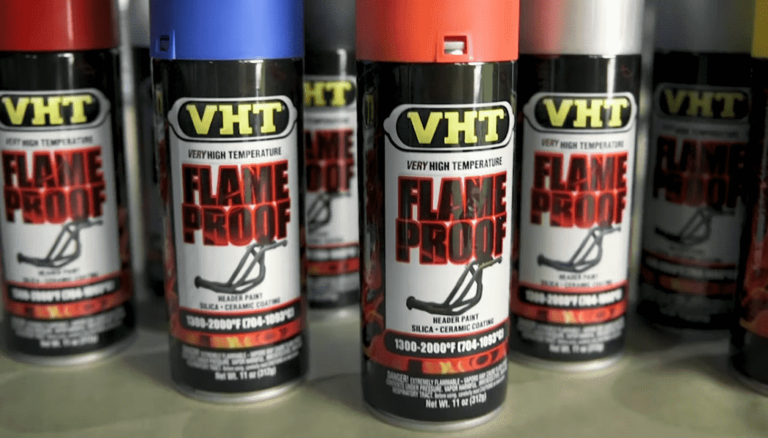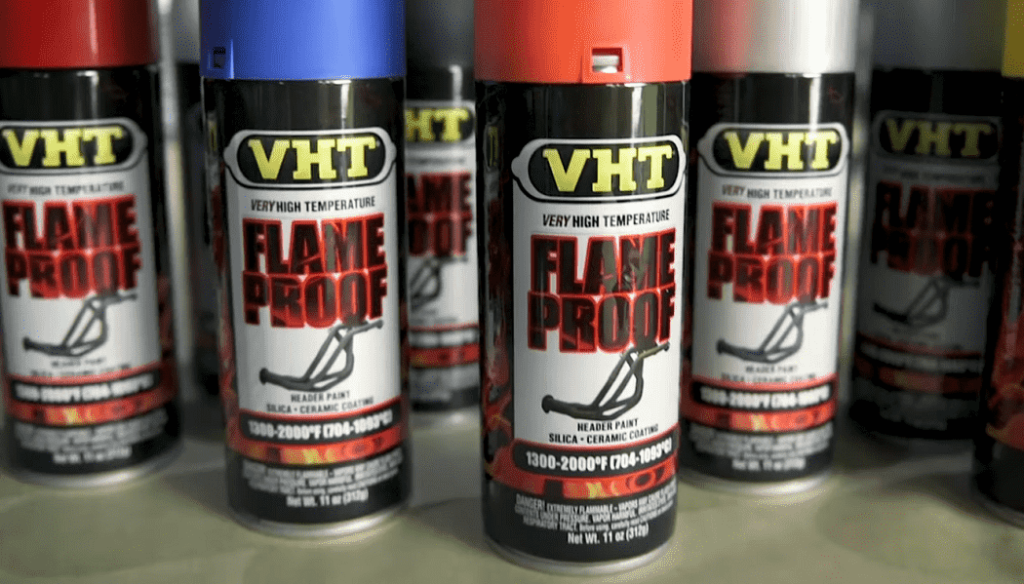
What Happens If You Don’t Cure VHT Paint?
If VHT (Very High Temperature) paint is not properly cured, it may lead to poor adhesion, reduced durability, and compromised heat resistance. The paint may peel, flake, or discolor when exposed to high temperatures, making it less effective in protecting the surface it is applied to.

Read on to know about the proper curing techniques and the long-lasting benefits they bestow upon your prized possession.
What Happens If You Don’t Cure VHT Paint?
VHT (Very High Temperature) paint is a specialized type of paint designed to withstand extremely high temperatures, often used for automotive parts, grills, exhaust systems, and other high-temperature applications.
It is evident that neglecting to cure VHT paint can have significant consequences for both the paint’s longevity and the overall quality of the finished project.
Let’s find out what would happen if you don’t cure VHT paint:
Inadequate adhesion: Proper curing allows the VHT paint to form a strong bond with the surface it’s applied to. Without adequate adhesion, the paint may start to peel, flake, or chip off, resulting in an uneven and unsightly finish.
Reduced temperature resistance: VHT paint relies on the curing process to develop its ability to withstand high temperatures. If not cured correctly, the paint may not reach its full temperature resistance potential, leading to premature discoloration, cracking, or even burning off when exposed to high heat.
Uneven finish: Improper curing can cause the VHT paint to dry unevenly, leading to inconsistencies in color and texture across the painted surface. This can result in a patchy appearance and compromise the aesthetic appeal of the painted item.
Vulnerable to chemicals and solvents: Curing is essential for the paint to fully harden and form a protective barrier against various chemicals and solvents. If the paint is not cured properly, it may remain vulnerable to these substances, leading to stains, discoloration, or deterioration of the paint layer.
Reduced durability and longevity: Proper curing enhances the paint’s durability, making it more resistant to wear, weathering, and other environmental factors. Inadequate curing can significantly shorten the lifespan of the paint, leading to more frequent touch-ups or complete repainting.
Toxic fumes: During the curing process, VHT paint releases certain volatile compounds and fumes. If the paint is not cured in a well-ventilated area or according to the manufacturer’s instructions, these fumes may not disperse properly, leading to potential health hazards for individuals in the vicinity.
What to Do if VHT Paint Isn’t Cured Properly?
If you find that your VHT paint hasn’t cured properly, follow these steps to address the issue:
Identify the problem: Before taking any corrective actions, it’s crucial to understand what went wrong. Examine the surface to determine if the paint has not adhered well, if it is soft or tacky to the touch, or if there are any visible imperfections.
Check curing conditions: Review the curing conditions during the painting process. Ensure that the temperature and humidity were within the manufacturer’s recommended range. Improper environmental conditions can significantly impact paint curing.
Give it more time: If you’ve recently painted the surface and it doesn’t appear to be cured, be patient and allow more time for the paint to dry and cure. Some paints, especially automotive VHT paints, may require more extended curing times.
Remove uncured paint: If the paint is still wet or tacky after a considerable amount of time has passed, you may need to remove it. Use a paint scraper or sandpaper to gently remove the uncured paint from the surface. Be careful not to damage the substrate underneath.
Clean the surface: After removing the uncured paint, clean the surface thoroughly to remove any paint residues, dust, grease, oil, or contaminants. Use a mild soap and water solution or a suitable cleaning solvent for the surface type. For automotive exhaust parts, you can use a degreaser or brake cleaner.
Sand the surface: Lightly sand the area where the paint didn’t cure properly. Sanding helps create a rougher surface for the new paint to adhere to. Use a fine-grit sandpaper (around 220 to 320 grit) and sand in a circular motion until the surface feels smooth and even.
Repaint the surface: Once the area is properly cleaned and sanded, apply a new coat of VHT paint following the manufacturer’s instructions. Apply the paint in thin, even coats, holding the can about 10-12 inches away from the surface. Avoid heavy application, as it may lead to runs and uneven curing. Spray the paint in a well-ventilated area or use a paint booth to control environmental factors.
Proper curing conditions: After repainting, ensure that the newly painted surface is exposed to the recommended curing conditions. Follow the VHT paint manufacturer’s instructions regarding temperature, humidity, and curing time. Creating the right curing environment is crucial for achieving a durable finish.
Test the paint: Once the paint has cured according to the manufacturer’s instructions, test its adhesion and durability. Gently press your fingernail against the painted surface to check for any soft spots or lifting edges. If the paint seems properly cured and adhered, you’ve successfully resolved the issue.
Note: Each paint type and brand may have specific curing requirements, so always refer to the product’s technical data sheet and instructions for the best results.
How to Cure VHT Paint?
Curing VHT paint properly is crucial to achieve its maximum performance and durability. Below are the detailed steps on how to cure VHT paint:
1. Initial Curing:
After applying the VHT paint and once the paint has dried, it needs to undergo an initial curing process. This can be achieved by exposing the painted object to moderate heat. The ideal method for initial curing is using an oven or a heat gun.
Oven Curing: Place the painted object in an oven, ensuring there is enough space around it for proper air circulation. Set the oven temperature according to the manufacturer’s instructions, typically between 250°F to 400°F (120°C to 200°C). Leave the object in the oven for the recommended curing time, usually around 30 minutes to an hour.
Heat Gun Curing: If using a heat gun, hold it about 2-3 inches away from the painted surface. Move the heat gun in a back-and-forth motion to distribute the heat evenly. Keep the heat gun moving to avoid overheating any specific area. Continue this process for the recommended curing time.
Note: If the painted object is not suitable for oven or heat gun curing, consult the manufacturer for alternative curing methods.
2. Full Curing (Heat Cycling):
To achieve the highest level of durability and performance, it’s best to subject the painted object to a full curing process known as heat cycling. This involves exposing the painted surface to progressively increasing temperatures and then allowing it to cool down between cycles.
Heat Cycling Procedure:
- Start by placing the object in a room-temperature environment.
- Gradually increase the temperature to about 200°F to 300°F (93°C to 150°C) and maintain this temperature for about 20-30 minutes.
- Turn off the heat source and allow the object to cool down to room temperature naturally.
- Repeat the heating and cooling cycles two or three more times.
3. Final Drying:
After completing the heat cycling process, allow the object to cool down to room temperature before handling or reinstalling it. This will ensure that the paint has fully cured and bonded to the surface.
4. Curing Time and Temperature Variation:
The curing time and temperature may vary based on the specific VHT paint product being used. Always refer to the manufacturer’s instructions for the recommended curing process for the particular paint you are using, as different VHT paint formulations may have slightly different curing requirements.
How Long Does It Take for VHT Paint to Cure?
VHT (Very High Temperature) paint typically takes around 24 hours to cure completely. During this curing process, the paint undergoes chemical changes, allowing it to reach its maximum durability and heat resistance. Follow the manufacturer’s instructions for the specific product being used, as curing times may vary depending on the type and application method.
Final Words
Neglecting to cure VHT paint is a risk not worth taking. Throughout our discussion, we have explored the crucial role that the curing process plays in maximizing the paint’s adhesion, durability, and resistance to extreme temperatures and chemicals.
So, take the extra steps, follow the guidelines, and enjoy the benefits of a well-cured VHT paint job. Your project will thank you for it.
